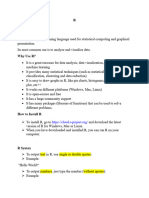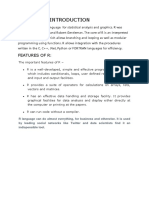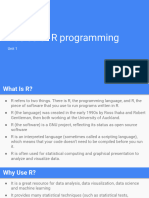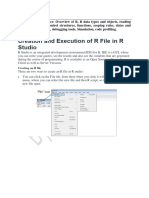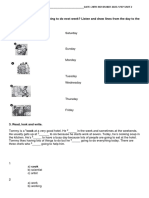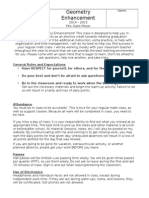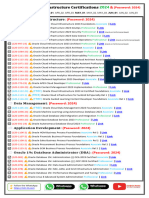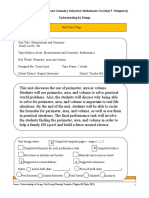0% found this document useful (0 votes)
16 views23 pagesR Programming
R is a widely used programming language for statistical computing and data visualization, offering various statistical techniques and graphical capabilities. It is open-source, platform-independent, and supported by a large community with numerous packages available for different tasks. The document covers R syntax, variable creation, data types, and basic operations, providing examples for better understanding.
Uploaded by
Danish KhanCopyright
© © All Rights Reserved
We take content rights seriously. If you suspect this is your content, claim it here.
Available Formats
Download as PDF, TXT or read online on Scribd
0% found this document useful (0 votes)
16 views23 pagesR Programming
R is a widely used programming language for statistical computing and data visualization, offering various statistical techniques and graphical capabilities. It is open-source, platform-independent, and supported by a large community with numerous packages available for different tasks. The document covers R syntax, variable creation, data types, and basic operations, providing examples for better understanding.
Uploaded by
Danish KhanCopyright
© © All Rights Reserved
We take content rights seriously. If you suspect this is your content, claim it here.
Available Formats
Download as PDF, TXT or read online on Scribd
/ 23

